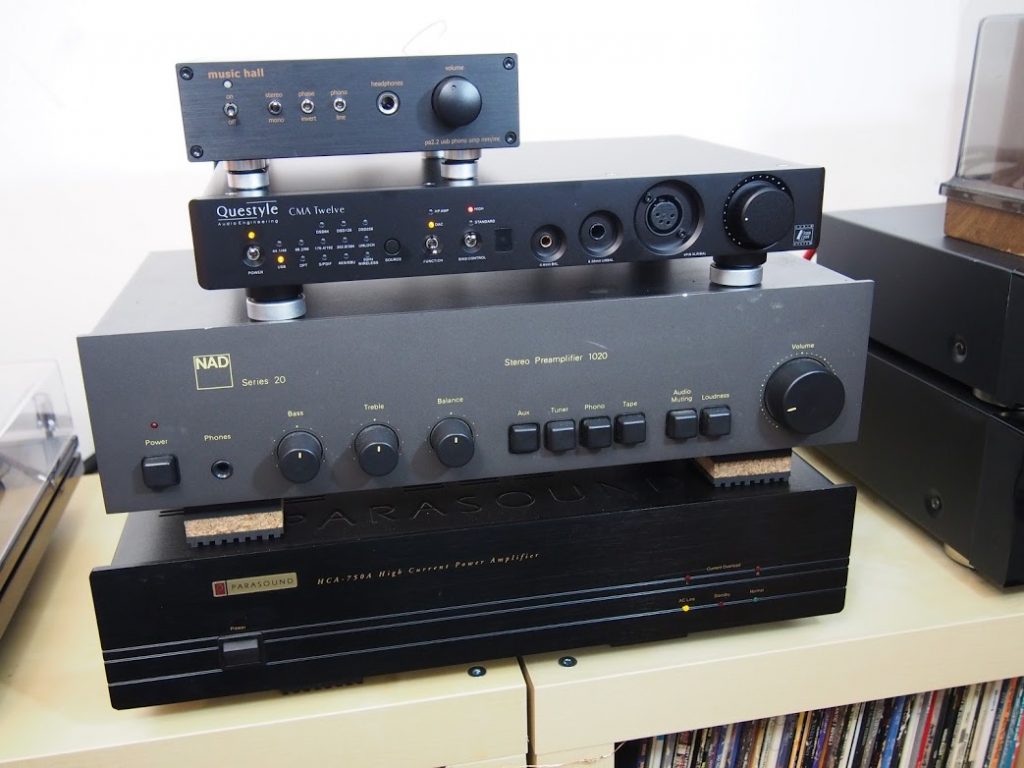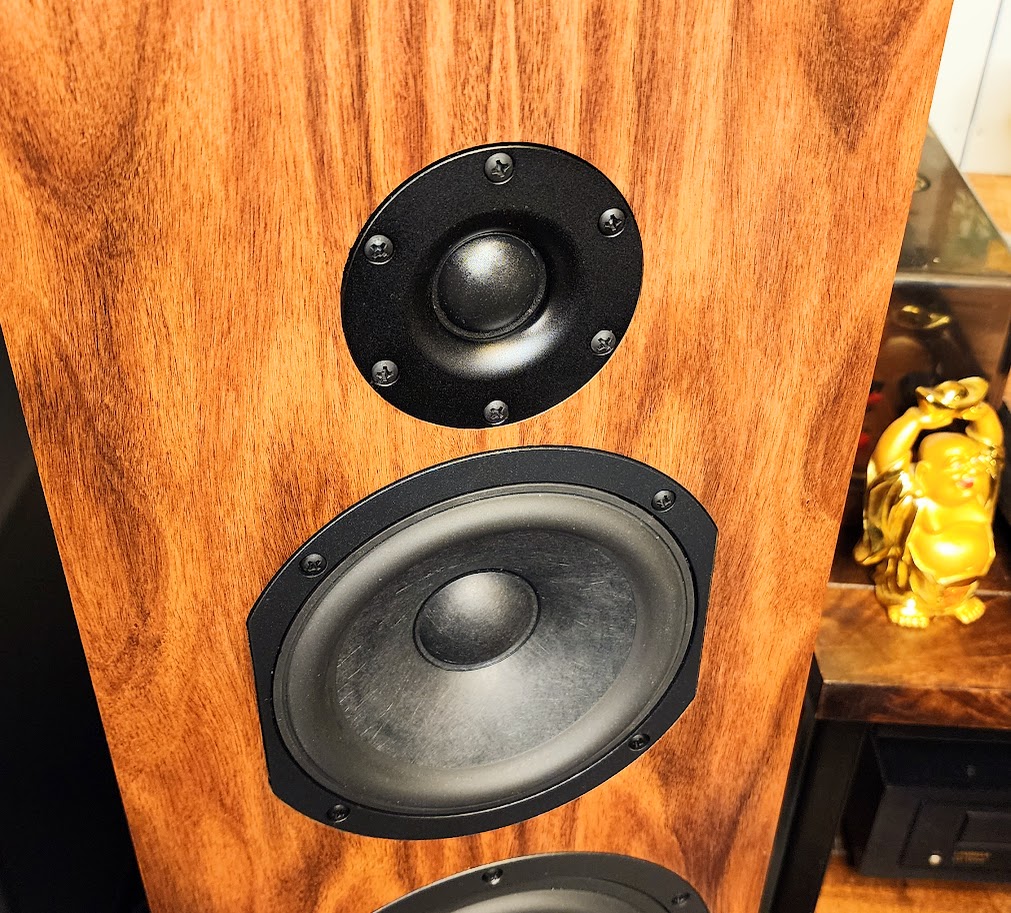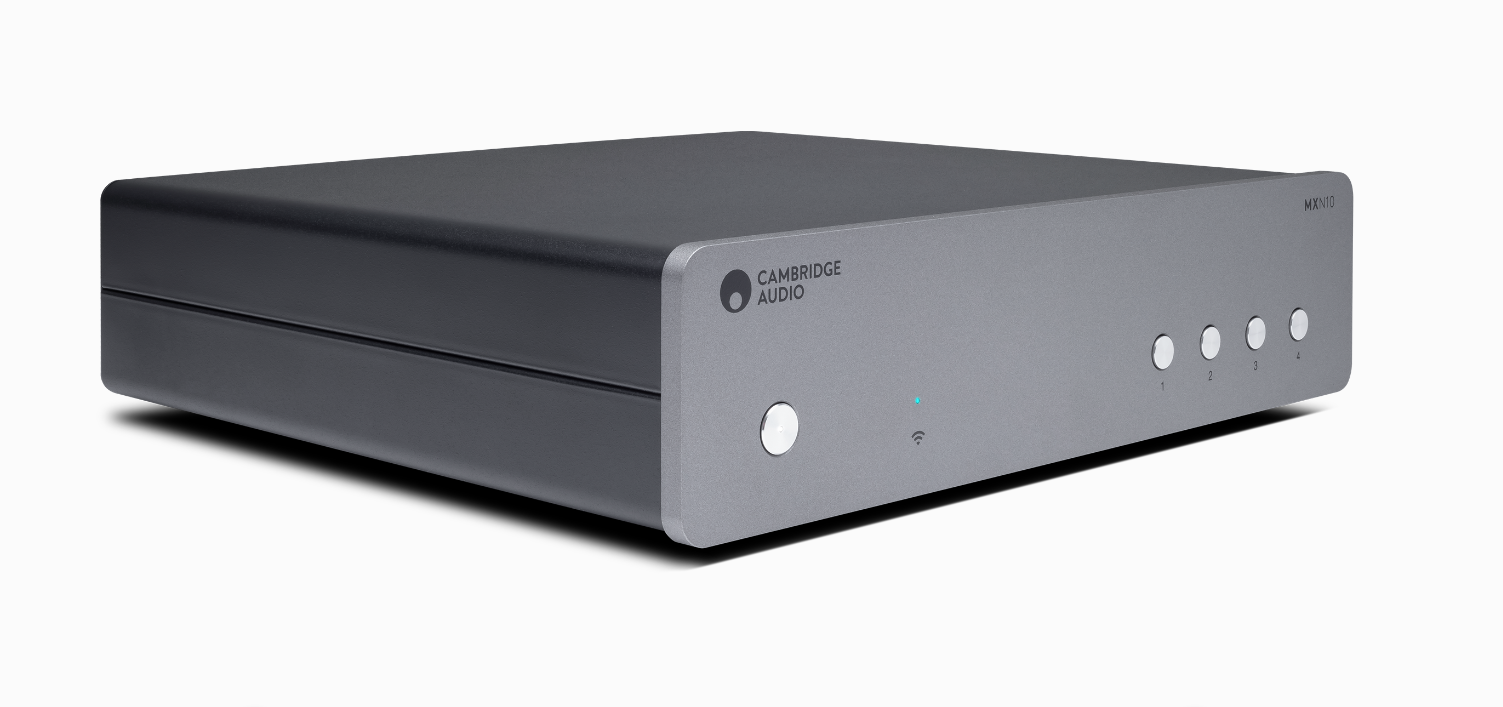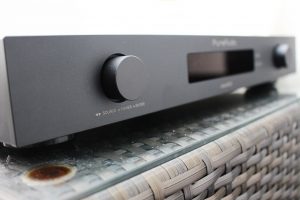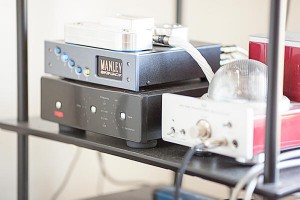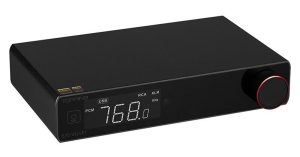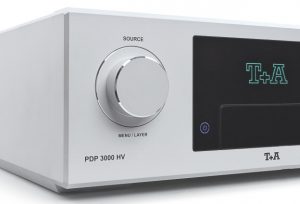It's funny. As we move up through the echelons of the audio world, the pieces that produce our sonic magic become more and more singular in function. The jobs which devices perform move into larger and more separate boxes as if no component can do two things well at once. Stay in your lane. In fact, as we rise up the ranks, we even put more space in between our components. Can one piece of audio hardware truly be two things at once and still be a contender? Questyle has introduced the CMA Twelve DAC/headphone amp as a flagship product ($1499) and created a compelling argument for it.
Unboxing
Unboxing finds the CMA Twelve neatly packaged in a cloth protective bag, which immediately adds some feeling of assurance that I am about to put a high-end product on my shelf. As a physical unit, the CMA Twelve sits between a half and full-size component at 13" wide and just over 2" high. The front panel is laden with LED indicators for source, sample rate, and functions. Three toggle switches control power, DAC/headphone function, and BIAS control for headphones.
There are three slightly recessed outputs for headphones: 4.4mm balanced (for IEM users), 6.35mm (1/4" to us Yanks), as well as a 4-pin balanced output. A rotary volume control handles attenuation for the headphone or preamp output.
The rear panel sports inputs for optical (TOSLINK), USB type-B, AES/EBU, and S/PDIF coaxial (RCA). There is a digital coaxial S/PDIF output, not necessarily a common feature. Analog outputs come in both unbalanced (RCA) and balanced (XLR) varieties. Output is switchable between fixed and variable via a rocker switch on the back panel, with another switch for selecting Studio or Standard mode. The 5G antenna is also housed in the back, intended for pairing with other Questyle products.
Included with the CMA Twelve is a versatile remote control that allows switching of inputs and functions of the Questyle from the comfort of your listening chair. Besides just a simple volume up and down, the remote features mute, and direct selection of your source with well-laid out buttons that are easy to read. Handy for us audiophiles that are a bit overdue on renewing their eyeglass prescriptions… ahem.
With as much as the CMA Twelve does, and given its dual role, there is much to cover here, so it's time to get down to some listening!
As a DAC
The CMA Twelve utilizes patented true DSD technology, using the AKM AK4490 DAC chip. According to Questyle, it processes DSD without any PCM converting and provides true DSD. For optical and S/PDIF, processing is 44.1kHz-192kHz/16-24-bit standard. For USB, processing is 44.1kHz-384kHz/16-32-bit PCM and DSD native, DSD64, DSD128, DSD256, and DoP format. The CMA Twelve will not unfold MQA, but that may not be an issue for some users.
So, let's begin…well… at the beginning, shall we? For me, that means the optical input. Using a Straight Wire TOSLINK cable from my Pioneer Elite DV-C36 CD player, and rolling the title cut from Lyle Lovett's My Baby Don't Tolerate, the Questyle CMA Twelve makes an instant and striking statement in my listening system. There is an immediate bounce and sharpness that goes beyond basic dynamics into a sheer liveliness. Yes, I can wax poetic about the soundstage and placement of instruments, and it's here in spades, however, it's the punch that this recording now has that has me turning it up a little louder, listening a second and third time.
This has me craving a live recording. Switching over to the S/PDIF input, using an Audio Art Cables D1-SE2 digital coax cable and a Pioneer Elite DV-47A, I slip in Steven Wilson's Home Invasion. Even with the intro, there is a stark realism right from the get-go. The responsiveness of the CMA Twelve becomes apparent again in the title track, and notes hit my chest with authority. The Questyle DAC has breathed a bit of dragon's breath into my system, and it is rather enjoyable. Skipping forward to something more expansive, like "The Creator Has a Mastertape," it's easy to immerse myself into the live experience rather than just analyze what I'm listening to. And that is, after all, the whole point of what we're really going for in our systems, isn't it?
Staying with both the S/PDIF and the little shiny discs for the moment, it is important talk about what the CMA Twelve will do with a well-produced album, such as Dire Straits' Making Movies; in particular, the song "Expresso Love." It's not just the many layers to this song, but the subtleties. While this is the first Dire Straits album that Mark Knopfler played all the guitars on, he also played a lot of them, and this tune is no exception. Listening now there is a certain magic with the single guitar in the intro, and the piano running over it. I admit, I am playing this intro over and over again just to bask in it. The full track kicks in with an unmistakable fullness that still lets me hear that single guitar there in the mix of everything. So much there, yet nothing is lost.
Moving into the realm of hi-res, streaming Qobuz—utilizing the Audirvana software interface through my HP laptop—and feeding the CMA Twelve's USB input through an Audioquest Carbon cable, I first pull up Steely Dan's "Third World Man" (24-bit/96kHz). Here, even more so than with CD, the impact of the CMA Twelve is immediate. The recording has an overall percussiveness and sharpness to it that amplifies the natural groove of the song. The spatiality is immense while simultaneously maintaining a laser focus.
Gliding right into Mancini, "The Pink Panther Theme" (24-bit/96kHz) demonstrates the full capabilities of the CMA Twelve DAC in just two minutes and forty seconds. Kept on a constant loop, I may have been satisfied right here. This track tells stories that other music just cannot. However, I let the entire Pink Panther album play and sink right in. Notes and percussion jump out like jackrabbits, and horns hit with tremendous force, staying incredibly musical, but increasing the response time to the listener, and my pulse as well. Mind you, this is still smooth as a good cabernet, just with the bite of one, too.
As a Headphone Amplifier
The headphone section of the CMA Twelve outputs a healthy 247mW into 300 ohm unbalanced, and 825mW into 32 ohm balanced headphones, allowing you to drive even the most sensitive cans. I am using three sets of headphones to test the CMA Twelve's headphone section- the LSA HP-2 closed-back headphones, the Sennheiser HD-598 open-back headphones, and the KLH Ultimate One.
The first album I wish to experience is Pink Floyd's The Endless River (24-bit/96kHz), and right away, the pairing of the CMA Twelve and the LSA headphones certainly provide an experience. There are a couple of bass crashes in "Things Left Unsaid" that I can feel all the way through me, without having to drive the 'phones to ear-splitting levels. In fact, I am only about a quarter up on the volume control.
The performance of the CMA Twelve as a Headphone amp shows itself to be similar to that of which I heard as a DAC. There is impact and immediacy to the music, all while maintaining a remarkable smoothness and musicality overall.
Unplugging the LSA 'phones and plugging the Sennheisers in, I dial up John Hiatt's "The Wind Don't Have to Hurry" (24-bit/44.1kHz). While not the audible laser show of Pink Floyd, this allows me to focus more on acoustic instruments, like a single banjo and drum being played with a couple voices over them. As the single instruments are joined by more, and larger sounds, a chorus of voices, claps, bigger drums, the song never loses focus or gets muddy. I can clearly hear the original banjo through the entire track, no matter how the song crescendos and decrescendos.
Changing back over to the LSA headphones one more time, it's time for something with some boogie, and I find my mojo in David Bowie's "'Tis a Pity She Was a Whore" (24-bit/96kHz). This track has so much slam to it, and the CMA Twelve drives the LSA cans to… as Bowie says… punch me like a dude. Here, more than any track I've yet heard, the attack that the CMA Twelve provides is readily apparent. So much so, that when the song is over, I'm going to unplug the headphones, and enjoy this song through my speakers, as well!
Finally, giving the KLH headphones a turn, Supertramp's title cut from Even in the Quietest Moments (24-bit/96kHz) make for a sonic respite as I close this listening session out. The acoustic guitar fades in gently over the sound of a bird chirping. Every note of the guitar has intricate pick precision to it. As the low tom drum thumps rhythmically through the first half of the tune, it never overwhelms the guitar or voice.
Wrapping It Up
The Questyle CMA Twelve excels in its role, doing double-duty as a high-end component, demonstrating itself as a remarkably capable and responsive DAC as well as a powerful headphone amplifier, all for $1499. While the Amphicar of the early sixties may not have been a tremendous success (though it sure looked fun driving into the lake), there is great satisfaction getting two things in one- in this case, two essential pieces of hi-fi bliss in one sleek chassis.
CMA Twelve
Retail: $1499
Questyle






